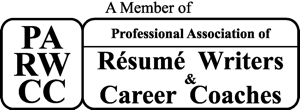iStockphoto.com | Molnia
Letter writing is a dying art, which is unfortunate. However, it is not unreasonable for people to question the importance of the cover letter in the seemingly impersonal modern job application process. Unless you know exactly to whom you are sending a cover letter, is there even a point?
The short answer: In many cases, yes, there is a point. Even though in this age of applicant tracking systems (employer recruitment systems) cover letters have diminished in value and usage, a well placed, well written cover letter can help you get an interview for a job you want.
So, how and when does a cover letter matter?
Your resume may have to conquer an automatic tracking application system but there are real people on the other end of the process, and if you know exactly who that is and how to reach them, you owe it to them to demonstrate that you really want – and are qualified for – the job.
Some job postings request a cover letter to apply. In this case, you have no choice; interpret this requirement as your first test from the hiring manager. A poor cover letter (or lack of one altogether) may eliminate you as a viable candidate.
If a cover letter is not requested, submitting one that is professional in tone and format shows you’ve put in extra effort and can create a strong first impression.
When you take advantage of the extra opportunity to detail your reasons for applying for a job and talk up your qualifications, you gain a competitive edge over those who skip this step or send a generic going-through-the-motions type of cover letter.
Now that you are convinced to write a cover letter for every application, required or not, you have to write it. Here are quick step-by-step instructions to write an effective and professional cover letter:
Step One: Format your cover letter like a professional business letter, incorporating the date, addressee’s name and title, the address to where it’s being sent, and salutation. For those of you raised exclusively on electronic communications, here’s a sample and guide from the kind folks at Purdue University.
Step Two: Format your cover letter and resume with consistency between the two documents, namely use the same fonts and headers. Deviating from this will come across as careless.
Step Three: If possible, find out the name of the recruiter or hiring manager and address your cover letter to that individual; mining LinkedIn can often help you deduce this information. If you do not know to whom you are sending the cover letter, the salutation should be, “Dear Hiring Manager:”
Step Four: Keep it concise and professional, without sounding personal in nature.
Step Five: Don’t exceed four or five paragraphs, or one page. Less is more.
Here’s a sample format:
Paragraph One: Lead with your reasons why you are excited about the company and to apply for the job.
Paragraph Two: Tell the story of your relevant professional background, how it applies to the job position requirements, and how you will add value to the company’s mission. This is your opportunity to market yourself with some sizzle.
Paragraph Three: List two or three of your biggest accomplishments that tie into the job’s criteria.
Paragraph Four: Thank the person for reading your resume, tell them you appreciate their consideration, and finish with an action item (e.g. I will follow up with a phone call on Friday).
While a great cover letter can help you, a poor one can hurt you. Bear in mind that you’ll actually hurt your chances of getting the job if your cover letter (or resume, for that matter) shows a lack of effort, is poorly formatted, or contains typos or misspelled words. Your cover letter is the first thing an employer will see, and they’ll make judgments about you from this.
Proofread your letter several times. Then ask someone else to proofread it as well to root out any typos you missed.
Lastly, if you get stuck, there are many online sites and books with great templates and examples of dynamic cover letters. You wish to invest your time and money in these tools to learn best practices.
Philip Roufail contributed to this article.
Scott Singer is the President and Founder of Insider Career Strategies Resume Writing & Career Coaching, a firm dedicated to guiding job seekers and companies through the job search and hiring process. Insider Career Strategies provides resume writing, LinkedIn profile development, career coaching services, and outplacement services. You can email Scott Singer at scott.singer@insidercs.com, or via the website, www.insidercareerstrategies.com.






